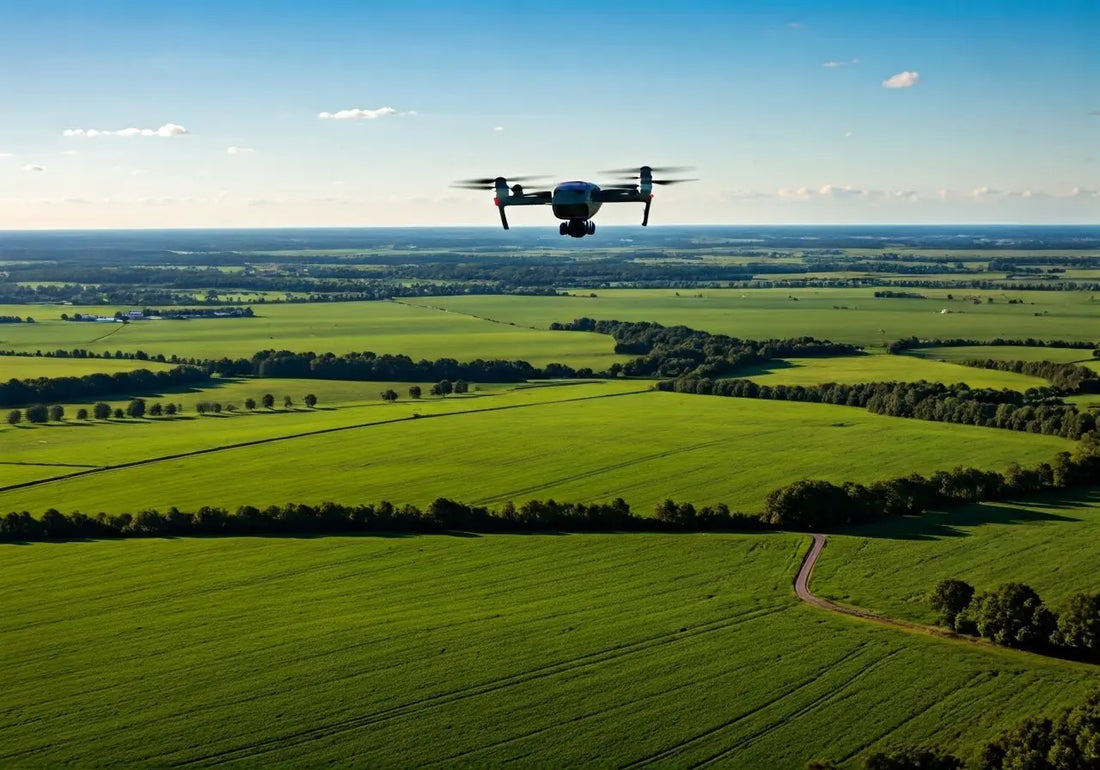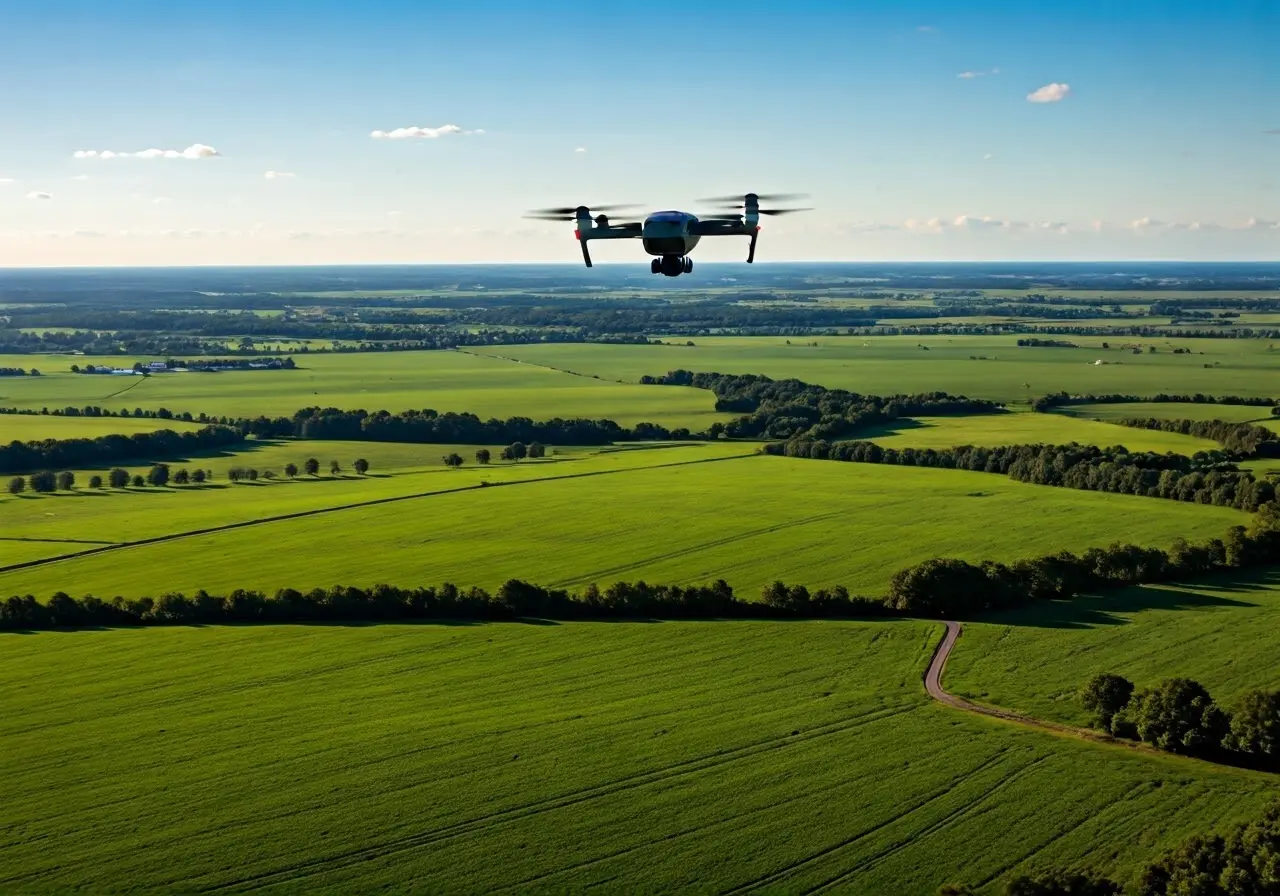
10 Ways Drone-Based Agriculture is Revolutionizing Farming
Share
In today’s farming world, technology is transforming traditional practices, making them more efficient and sustainable. One of the most exciting innovations is the use of drone-based agriculture. Drones offer a new perspective on farming, allowing for better data collection, improved crop management, and overall enhanced productivity. In this article, we’ll explore ten ways drones are reshaping the agricultural landscape.
1. Precision Farming for Maximum Yield
Drones enable farmers to apply resources like water and fertilizers with pinpoint accuracy, ensuring that crops get exactly what they need for optimal growth. This precision agriculture method not only enhances crop productivity but also minimizes waste. By releasing fertilizers only when and where they are needed, farmers can significantly reduce their environmental footprint. These selective applications prevent overuse of fertilizers, which can lead to runoff and pollution in nearby water bodies. Consequently, drone-based agriculture boosts the overall health of ecosystems surrounding farmlands. For farmers, this means more sustainable production with higher yields.
Moreover, drones equipped with advanced sensors can determine the specific needs of different areas within a single field. This targeted approach vastly improves resource allocation. Farmers can adjust their strategies dynamically using real-time data directly from the fields. This personalized attention to crop sections is something traditional farming cannot easily achieve and is a game-changer in agricultural efficiency. With this technology, farmers can ensure that each plant receives precisely what it requires, leading to healthier plants and bountiful harvests.
2. Efficient Crop Monitoring
With drones, farmers can monitor the health and development of their crops in real time, spotting issues before they become critical. Drones provide a bird’s-eye view of the fields, making it easier to identify patterns of stress such as pest infestations, diseases, or waterlogging. This early detection is crucial because it allows farmers to act swiftly and prevent small problems from escalating into full-blown crises that could jeopardize entire harvests.
One of the incredible advantages of drone-based monitoring is its ability to cover large areas quickly. Traditional methods of crop inspection can be labor-intensive and time-consuming, often resulting in delayed responses to urgent issues. Drones, however, can scan an entire field in a fraction of the time it would take a team on the ground, offering detailed imagery and data collection. Advanced image processing software can then analyze this data to provide insights and recommendations tailored to the farmer’s specific needs.
3. Improved Data Collection and Analysis
Drone-based imaging allows for the collection of precise data on crop conditions, which can be used to make informed decisions about crop management. Drones fitted with specialized cameras capture infrared and multispectral images that reveal valuable information invisible to the naked eye. These images can help identify plant health conditions by analyzing their reflective properties, predicting yields, and tracking the progress of crops over time.
Furthermore, the data gathered through drones can be easily integrated with advanced analytical tools to improve decision-making. Software platforms can process drone data to create comprehensive maps and models of the fields. These digital resources allow farmers to experiment with different farming scenarios and strategies virtually. It is akin to having a digital twin of the farm, which can be tested and adjusted without physical trials.
4. Easy Access to Hard-to-Reach Areas
Drones can effortlessly navigate difficult terrain, allowing farmers to inspect areas that would otherwise be challenging to access. In regions characterized by rugged landscapes or fragmented fields, traditional manual inspections can be arduous and sometimes impossible. Drones, however, glide over obstacles, offering consistent monitoring capabilities regardless of the landscape’s complexity.
Accessing these hard-to-reach zones is essential, particularly in large operations with mixed terrains. Farmers can ensure that every acre of land is productive and well-maintained without the physical strain of traversing vast or difficult areas. This comprehensive approach minimizes the oversight risks that often accompany hard-to-access sections, ensuring no part of the farm is neglected due to inaccessibility.
5. Pest and Disease Management
By identifying pest infestations or disease outbreaks early, drones help farmers take quick action to protect their crops. Drones equipped with thermal and multispectral sensors can detect subtle changes in plant health that signify the presence of pests or the onset of disease. This capability allows farmers to intervene promptly, applying necessary treatments before damage escalates.
Early intervention can mean the difference between saving and losing entire fields. The rapid identification of critical issues through drone surveillance harmonizes with integrated pest management practices, optimizing pesticide use, and minimizing chemical runoff into the environment. Farmers can target treatments precisely, ensuring effective management while supporting sustainable agricultural practices.
6. Sustainability and Environmental Impact
Using drones minimizes the need for extensive resource use, supporting more sustainable farming practices and reducing environmental impact. By observing fields from above, farmers gain a better understanding of how to use natural resources like water and soil nutrients judiciously. The precision application of these resources prevents wastage and conserves precious environmental reserves, leading to more sustainable agriculture.
Additionally, the reduced need for heavy machinery in field monitoring and management tasks mitigates soil compaction and reduces greenhouse gas emissions. This lighter touch on the land translates to healthier ecosystems. Drone technology also boosts conservation efforts by helping monitor biodiversity, track endangered species, and manage wildlife interactions with farm operations, leading to a more holistic approach to stewardship.
7. Effortless Field Mapping
Drones create detailed maps of fields, providing comprehensive overviews that are essential for precision farming techniques. Maps produced by drones are often more accurate than traditional methods, largely due to high-resolution imaging combined with global positioning systems (GPS). These maps can include topographical information, plant coverage details, water flow paths, and soil analysis—crucial data for forming effective cultivation strategies.
Such precision mapping facilitates efficient land management, allowing farmers to plan tailored interventions and optimizations. It enables strategic field divisions for crop rotations and plots the most effective routes for planting, fertilization, and irrigation. Thus, drone-based mapping is instrumental in implementing precision farming practices that are sustainable and economically viable.
8. Cost Reduction and Efficiency
Automating labor-intensive tasks with drones reduces labor costs and enhances operational efficiency on farms. Traditional farming methods require large workforces to manage expansive properties, while drones provide an alternative by undertaking tasks such as monitoring, spraying, and even planting, all without direct human intervention.
Drones offer the potential to drastically cut operating costs and improve productivity as they work tirelessly across extended hours. This capability ensures continuous farm management in a seamless manner, optimizing human resources for tasks that require more intricate skills and decision-making. The financial savings achieved through reduced labor expenses can then be reinvested into the farm, driving further improvements and growth.
9. Disaster and Damage Assessment
After adverse weather conditions, drones can quickly assess damage, helping farmers take necessary measures to mitigate losses. Unfortunate events like storms, floods, and droughts can cause significant disruption to farming activities. Drones offer an immediate overview following such incidents, revealing the extent and impact of the damage.
The ability to capture real-time data enables swift responses to mitigate potential financial losses. By implementing recovery plans efficiently, farmers can regain control over their operations and negate impacts on their production cycles. Drone technology empowers farmers to make data-driven decisions, providing a foundation for disaster-resilient agricultural systems.
10. Enhanced Seed Planting Techniques
Drones can be used for precise seed planting, ensuring uniform distribution and better utilization of planting areas. Traditional seeding methods can be imprecise, leading to uneven crop emergence and wasted resources. Drone technology enables the dissemination of seeds at optimal depths and spacing, promoting uniform growth and optimizing land use.
Moreover, the automation of this task through drones allows for rapid planting over extensive areas, enhancing operational efficiency and freeing up labor for other essential tasks. By employing aerial seeding techniques, farmers can optimize planting schedules and consider climate conditions more effectively. This innovative method ensures crops have the best start possible, contributing to fruitful harvests.

